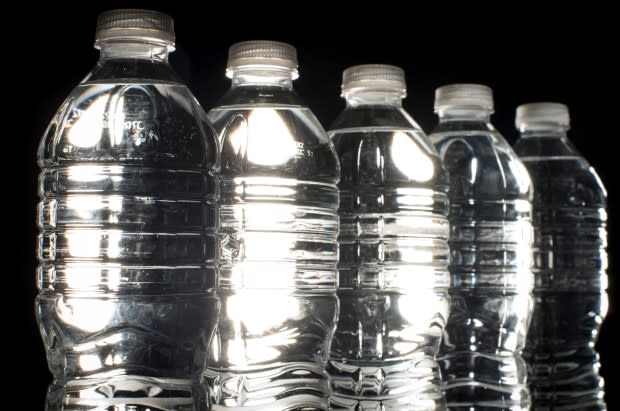Plan to ban single-use plastics has First Nations with long-term drinking water advisories worried
A plan to ban single-use plastics in Canada has First Nations with long-term drinking water advisories that rely on bottled water concerned about how they will be affected.
Single-use plastics, as defined by the United Nations Environment Programme, are disposable plastics from packaging that are often intended to only be used once. These include grocery bags, food packaging, straws, cutlery and bottles.
Last week, Prime Minister Justin Trudeau announced the federal government intends to ban single-use plastics as early as 2021.
"My family would have less plastic waste if we didn't rely on bottled water for fresh drinking water on reserve," read a tweet by Courtney Skye following the announcement.
She lives in Six Nations of the Grand River in southern Ontario, where only part of the community is connected to a water line fed by a state-of-the-art UV water treatment plant.
The rest of the community, including Skye's family, fills large jugs with water from cistern tanks because the tap water isn't safe to drink.
"There is a need for First Nations' perspective on a lot of different issues," she said. "People should be questioning and looking for it when they're seeing these types of announcements made on things that affect the whole society."
According to Indigenous Services Canada, there are currently 58 long-term drinking water advisories in effect on reserves, which the federal government plans to end by March 2021. Since 2015, 84 long-term advisories have been lifted.
'A terrible thing to have no water'
June Baptiste is a councillor for Lhoosk'uz Dene Nation in B.C. which currently relies on bottled water brought into the community for clean drinking water. Any ban on single-use plastics that would affect access to bottled water would not go over well in the community, she said.
"That would be a terrible thing to have no water out there, without no water plant," she said.
Lhoosk'uz Dene Nation has running water connected to its homes, but Baptiste said it is contaminated with heavy metals that leave the water yellow and smelling like sulfur.
Even when the water is boiled, it remains discoloured and foul-smelling, she said.
The community is hoping to get a chlorinated water treatment plant soon, but Baptiste is unsure of the project's timeline. If the community didn't have access to single-use plastic water bottles, she said it would be a disaster.
"How would they get water out to us? They would definitely have to build that water plant right away."
Emergency water supply
Even communities with water treatment plants sometimes rely on bottled water in emergencies — like when the water treatment plant in Carry the Kettle Nakoda First Nation in Saskatchewan burned down this winter.

It's estimated that it will be another six months before the water treatment plant is operational again. In the meantime, water is being trucked in from nearby communities and poured into a reservoir to feed the community's plumbing, while bottled water is being used for drinking.
"If we don't continue to have this water available to people, then there's going to be a real cry for water that is going to be devastating to communities in the future," said Tim Haywahe, a resident of the community.
Indigenous Services Canada said in an email they are committed to lifting all long-term drinking water advisories on reserve by March 2021.
"With every advisory lifted, that means one more community that no longer has to rely on bottled water," the statement said.
"For all initiatives to reduce plastic waste, the government of Canada's approach will take into consideration accessibility and health and safety. Accessibility and health needs of the public will be taken into account before any targeted action on single-use plastic products is taken."
The statement added that a ban is not the only option, as recycling rates can be "dramatically improved."
